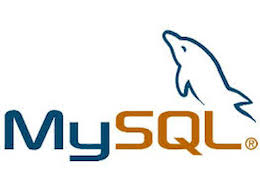How To Install MySQL on openSUSE

In this tutorial, we will show you how to install MySQL on openSUSE. MySQL is a cornerstone of modern database management, renowned for its reliability, flexibility, and widespread support. As an open-source relational database management system, it is a critical component for a multitude of applications, from small-scale projects to enterprise-level systems. Its compatibility with openSUSE, a robust and secure Linux distribution, makes it a preferred choice for developers and system administrators who seek a stable environment for their database operations.
This article assumes you have at least basic knowledge of Linux, know how to use the shell, and most importantly, you host your site on your own VPS. The installation is quite simple and assumes you are running in the root account, if not you may need to add ‘sudo‘ to the commands to get root privileges. I will show you the step-by-step installation of the MySQL database on openSUSE.
Prerequisites
- A server running one of the following operating systems: openSUSE.
- It’s recommended that you use a fresh OS install to prevent any potential issues.
- You will need access to the terminal to execute commands. openSUSE provides the Terminal application for this purpose. It can be found in your Applications menu.
- You’ll need an active internet connection to download MySQL and its dependencies.
- You have access to a user account with sudo or root privileges.
Install MySQL on openSUSE
Step 1. Before diving into the installation process, it’s crucial to ensure that your openSUSE system is up to date. This not only provides you with the latest features but also ensures that you have the latest security patches, which is vital for the stability and security of your system:
sudo zypper refresh sudo zypper update
Step 2. Installing MySQL on openSUSE.
Now adding the MySQL repository to your system allows Zypper to fetch and install MySQL. Follow these steps to add the MySQL SLES repository:
wget https://repo.mysql.com//mysql80-community-release-sl15-4.noarch.rpm
Add the repository package:
sudo zypper install mysql80-community-release-sl15-4.noarch.rpm
With the repository in place, you can now install MySQL. Zypper simplifies this process into a single command:
sudo zypper install mysql-community-server
To start using MySQL, you need to start its service and enable it to run at system startup. Use the systemctl command to achieve this:
sudo systemctl start mysql sudo systemctl enable mysql
Step 3. Secure MySQL Installation.
Securing your MySQL installation is paramount. The mysql_secure_installation script helps you improve the security of your MySQL setup. Run the script and follow the prompts to set a root password, remove anonymous users, disable remote root login, and remove the test database:
mysql_secure_installation
This script will guide you through setting a root password, removing anonymous users, disallowing root login remotely, and removing test databases. It’s a crucial step to protect your database from unauthorized access.
Step 4. Configuring MySQL.
The primary configuration file for MySQL is /etc/my.cnf. It’s important to handle this file with care and make changes with proper permissions:
sudo nano /etc/my.cnf
Within this file, you can set various options such as the data directory, port number, and memory usage. It’s important to understand each configuration directive before making changes to avoid misconfigurations.
Step 5. Test the MySQL Installation.
After securing and configuring your MySQL installation, it’s time to test it. Log into the MySQL console with the following command:
mysql -u root -p
You’ll be prompted to enter the root password you set during the security setup. Once logged in, you can run basic MySQL commands to interact with your databases.
Congratulations! You have successfully installed MySQL. Thanks for using this tutorial for installing the MySQL database on your openSUSE system. For additional or useful information, we recommend you check the official MySQL website.